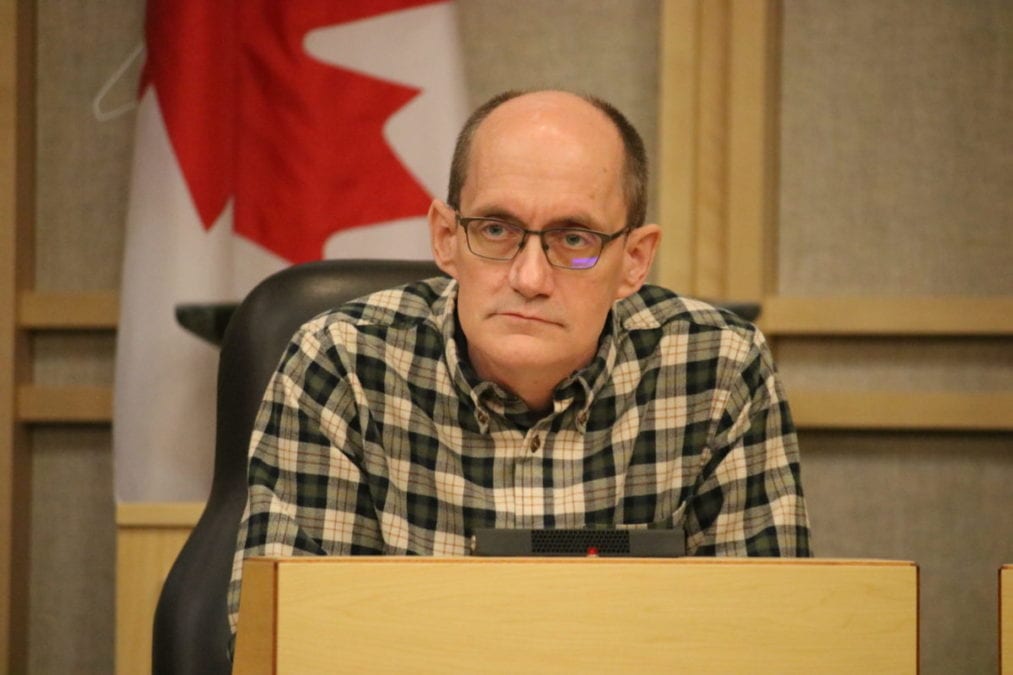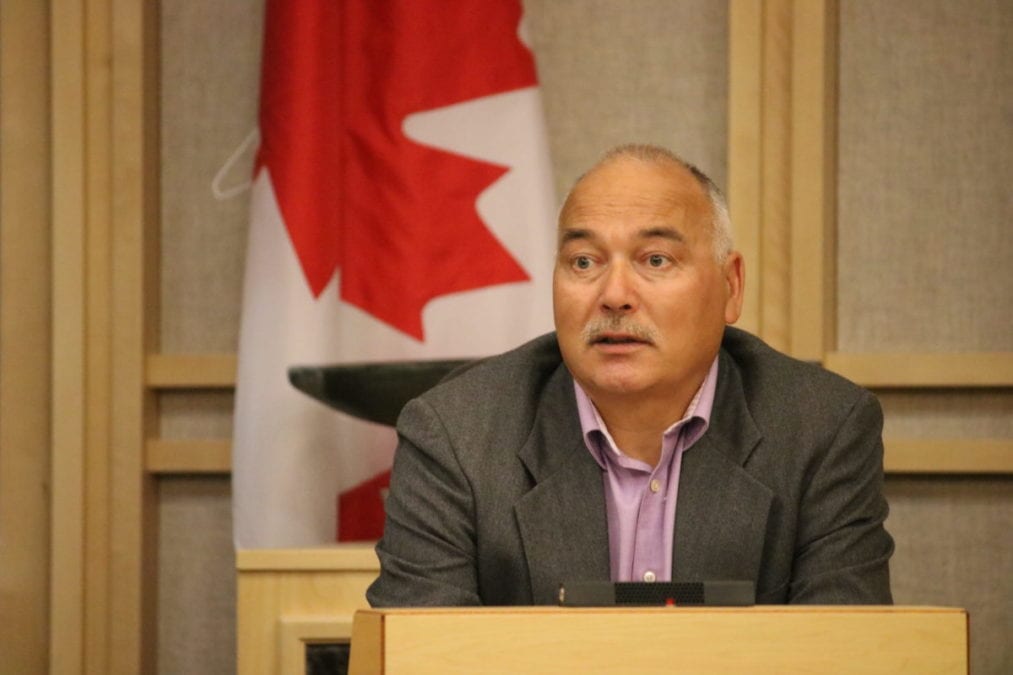Effective immediately, government representatives can be granted exemptions from undergoing 14-days of isolation prior to entering Nunavut.
MLAs, the senator and member of Parliament from Nunavut do not have to isolate if they submit a written request to the chief public health office, Dr. Michael Patterson announced on Aug. 4.

Rajnesh Sharma/NNSL photo
“The intent of this amendment is to allow government representatives to conduct official government business and fulfill a constitutionally-protected mandate,” said the chief public health officer, during a GN press conference.
This exemption only applies to official travel that is necessary to conduct legislative assembly, parliamentary and constituency business. It does not apply for personal matters, said Patterson.
He clarified that this travel amendment does not include staff or family members of government representatives.
Although government officials are exempted, they may choose to complete the two week isolation when travelling on official business.
“This exemption is optional,” said Patterson.
Initially, the MP and senator had already been listed as critical workers, but “we needed to include the MLAs,” explained Patterson, adding, “We wanted to be transparent and above board and make sure it was obvious.”
Presently, individuals can enter Nunavut without isolating if they are arriving from Churchill, Man., or Northwest Territories. Besides these two travel bubbles, all individuals except critical workers must isolate for two weeks in southern Canada before entering the territory. This mandatory isolation has been in place since March 25.
Government officials who are granted the exemption must adhere to the same protocols that have been outlined for critical workers who enter the territory. This means self-isolating at home when not working for the first 14 days upon returning.
They need to respect social distancing at work, wear a mask when physical distancing cannot be maintained and self-monitor for any symptoms of Covid-19, said Patterson. He added that exempted workers are permitted one trip to the grocery store if there's nobody to help them with their groceries.

Rajnesh Sharma/NNSL photo
Better in-territory testing needed
On Aug. 10, GN offices will reopen to the public. However, the rest of the measures listed in Nunavut’s Path will only be lifted when there's “reliable, sustainable testing capacity in-territory,” said Patterson.
The chief public health officer said he doesn't have a firm date for when there will be better testing capacity in Nunavut.
“There's a number of people who are working really hard to get the machines up and running and validated. But it takes time and, in this circumstance, bad information is going to be worse than no information. So we're stuck with where we are at the moment.”
Patterson also said isolation hubs will be lifted when in-territory testing allows for a “reasonable turn-around time on all results.” Presently, the average turnaround time for test results is seven days, said the doctor, noting it depends on the community and flight schedule.
As of Aug. 4, $21 million dollars has been spent on isolation hubs down south.
There are still no Covid-19 cases in Nunavut. To date, 1,825 people have been tested for Covid-19 and 272 individuals are under investigation for the virus.
Tuesday was the last scheduled weekly Covid-19 press conference for August. These updates are expected to resume in September. The legislative assembly is also scheduled to sit next month.